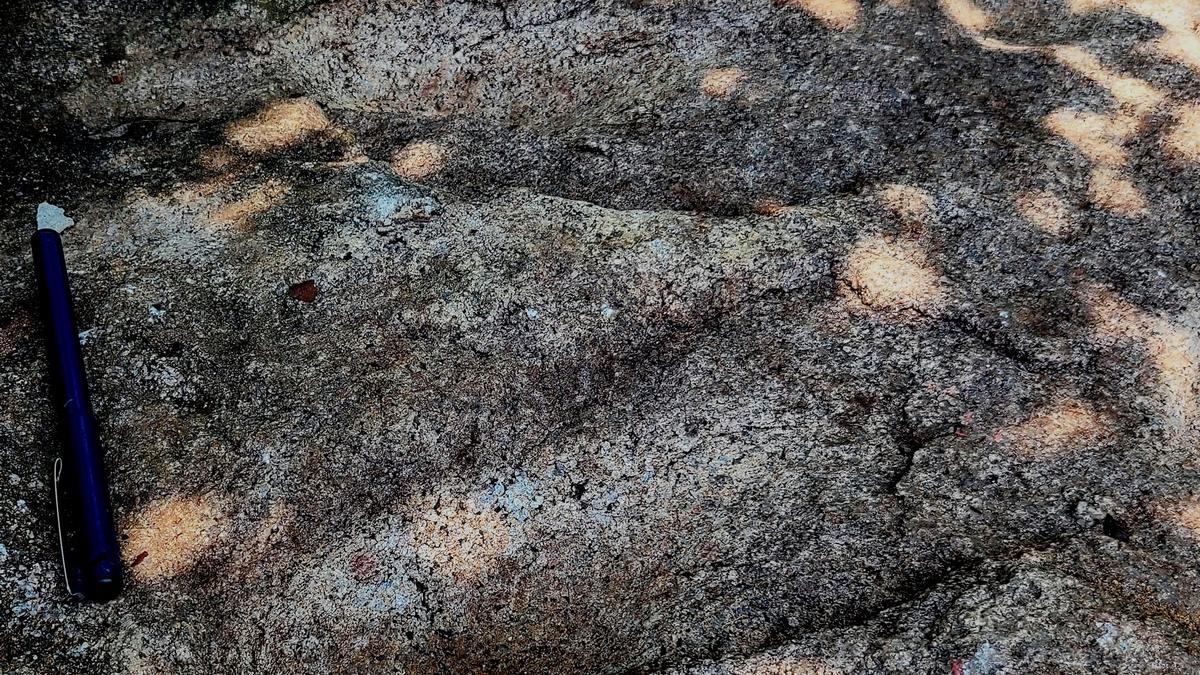
Archaeologist finds first evidence of rock art found in Mangaluru city
The Hindu
This discovery, according to T Murugeshi, retired Associate Professor of Ancient History and Archaeology, MSRS College, Shirva, is part of the work of recreating history of Babbu Swamy, taken up in association with Minchinabavi Kordabbu Trust, Padubidri, Udupi district.
The first evidence of rock art in Mangaluru city has been found near Boloor Panne Koteda Babbu Swamy shrine, according to T. Murugeshi, retired Associate Professor, Ancient History and Archaeology, MSRS College, Shirva.
Mr. Murugeshi said the rock art is in the form of a pair of human footprints, found on a natural stone boulder near the shrine. These footprints might have been created in the first or second century A.D. “This will make us rethink about the origin of Babbu Swamy, a revered legend of the region,” he said.
This discovery, Mr. Murugeshi said, is part of the work of recreating history of Babbu Swamy, taken up in association with Minchinabavi Kordabbu Trust, Padubidri, Udupi district. “This discovery gives a clue to search for similar art forms near other shrines of Babbu Swamy,” he told The Hindu.
Rock art, he said, is referred to paintings and rock paintings, which were unquestionable cognitive evidences of illiterate societies. He discovered a rock site in Buddhanajeddu in Udupi district in 2009, which, he said, was an important rock art site of coastal Karnataka. In this site, he found more than 20 footprints on laterite surface, and it belonged to the first or second century A.D. There was evidence of pottery and stone tools of neolithic period at the Buddhanajeddu site.
The rock art form discovered near Babbu Swamy shrine in Boloor does not have any relative evidence.
Mr. Murugeshi thanked Minchinabavi Kordabbu Trust president Vaman Salian and members of Koteda Babbu Swamy temple of Boloor for their cooperation in the discovery of the rock art.











